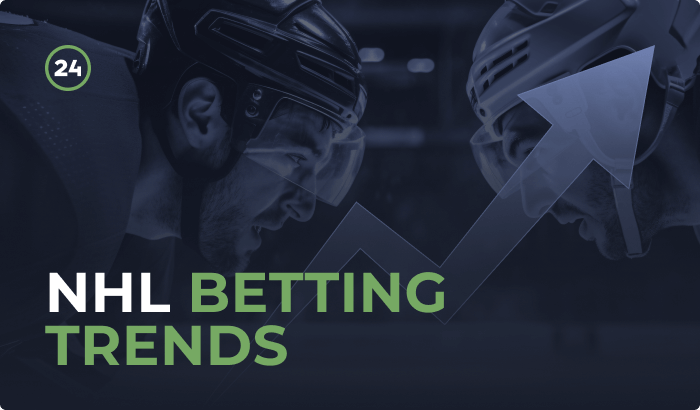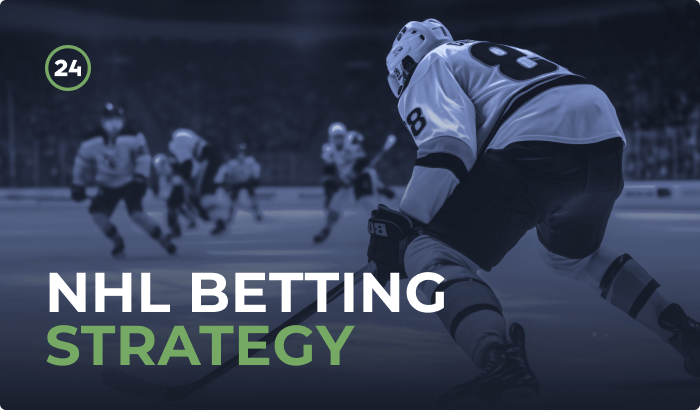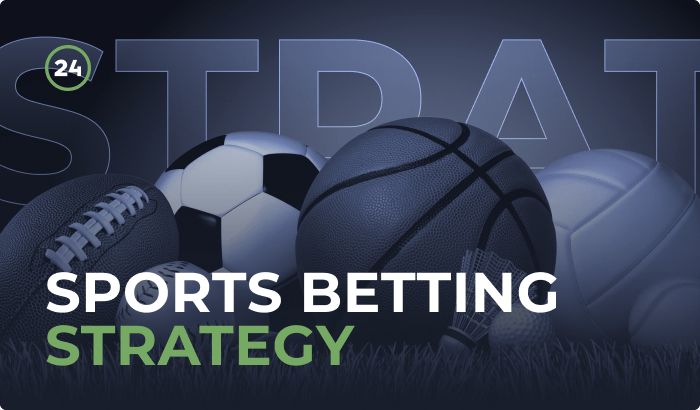NHL Public Betting Trends: Things to Look at When Wagering on Ice Hockey Games

The NHL, or National Hockey League, is the world's top professional ice hockey league. Founded in 1917, it features 32 teams battling for the Stanley Cup, the oldest championship trophy in North America. The season runs from October to April, with each team playing around 82 games.
The regular season is divided into conferences (East and West), with divisions further separating teams. Points are awarded for wins and overtime/shootout victories, with the NHL standings top teams from each conference qualifying for the playoffs. The playoffs are a grueling best-of-seven series format, where teams fight for wins to advance. The ultimate winner clinches the Stanley Cup!
With so much action on the ice, it's no wonder that NHL betting has become immensely popular. Fans and sports gamblers alike are eager to wager on their favorite squads and athletes, hoping to turn their passion into profit. But with so many factors influencing the outcome of each competition, it can be challenging to know where to stake your money. This is where understanding NHL betting trends comes into play.
NHL Betting Trends: What Are They?
NHL betting trends are primarily those hunches that punters use based on what’s happened before. They can provide valuable insights into how opponents perform under certain circumstances. By analyzing past results, you can identify patterns and tendencies that can help you make more accurate predictions. These trends can encompass a wide range of factors, including:
- Team performance. How does a specific squad perform at home versus on the road? Do they tend to score more goals when they are trailing? These factors can play a vital role in determining the gameplay.
- Matchup history. How have two teams fared against each other in previous encounters? Has one consistently dominated the other? This historical data can be an excellent indicator of potential outcomes.
- Player performance. Are there any key talents on either team who have been performing exceptionally well lately? A star player's absence because of injury can significantly affect the team's overall efficiency.
How to Use NHL Trends?
Knowing these trends alone is not enough to guarantee success in ice hockey gambling. They can encompass a vast array of data, from team performance and individual player statistics to historical matchups and even external factors like injuries or travel schedules.
Every time you feel like staking a dollar or more on a hockey game, take your time to analyze these things:
- Current fitness. While past trends are valuable, it's crucial to consider the teams' recent form. A squad that has been struggling recently may not live up to its historical trends.
- Injuries. Physical damage and aching bodies can also tip the scale in how players act on an ice rink. If a star athlete is sidelined, it can dramatically reduce the team's chances of winning.
- Upcoming schedule. A squad that is playing multiple games on the road in a short period may be more fatigued than their opponents with a more favorable schedule.
Using NHL betting trends effectively involves a lot of brain work. It involves scrutinizing data, identifying patterns, and ultimately making informed decisions. It's not about blindly following every trend you see; it's about using them as a starting point for your own analysis. Here’s a breakdown of how to approach using trends effectively:
- Identify Relevant Trends. The first step is to find the most relevant trends for the game you are interested in. Consider factors like team performance, head-to-head matchups, and recent trends for specific betting markets (e.g., against the spread, total goals).
- Evaluate Trend Significance. Not all trends are created equal. Some trends may be based on limited data, while others may be more consistent. It's important to evaluate the significance of each trend by considering the sample size, consistency, and potential external factors that could influence the outcome.
- Compare Trends with Other Information. Don't rely solely on popular moves. Combine your trend analysis with other relevant information, like injury reports, team news, and even your own observations about the game. This comprehensive approach will give you a well-rounded view and help you make more intelligent choices.
- Manage Your Bankroll. Even the best trends won't guarantee consistent wins. It's crucial to manage your bankroll responsibly, set limits, and stick to your gambling plan. Don't chase losses or overextend yourself.
- Stay Updated. The NHL is a dynamic league, with lineups constantly changing and tendencies evolving. Keep pace with the latest news, injury reports, and team performances to ensure that your analysis is backed by the most recent information.
What Are the Types of NHL Betting Stats?
NHL betting stats are the numbers that tell the story of a squad’s abilities and provide valuable clues for gamblers. Here are some key stats to consider:
Against the Spread (ATS)
One of the most fundamental parameters to analyze is a team's performance against the spread (ATS). This refers to whether a team has covered the point spread set by bookmakers in their games. You can explore NHL trends against the spread for both home and away games, as teams can sometimes play differently on the road compared to their home field. Look for teams that consistently cover the spread in specific scenarios.
Team Records
- Straight win-loss record (W-L). This reflects the team's overall performance and is a crucial factor in evaluating team strength.
- Winning percentage (%). This provides a standardized measure of a team's success, regardless of the number of games played.
- Record against the spread (ATS). This is another great indicator of a team's performance, showing how often they have covered the spread in previous games.
Offensive Stats
- Goals for per game (GF/G). This indicates a team's scoring prowess. A high GF/G suggests a potent offense that can generate goals consistently.
- Power play percentage (PP %). This represents the percentage of power play opportunities a team converts into goals. A high PP% is a sign of a skilled power-play squad that can capitalize on opponent penalties.
- Shots on goal per game (SOG/G). This reflects an offensive activity and volume of shots. While not always directly correlated with goals scored, a high SOG/G indicates a team that is actively generating scoring chances.
Defensive Stats
- Goals against per game (GA/G). This represents a defensive effectiveness. A low GA/G indicates strong defensive players that efficiently curb the scoring opportunities of their opponent.
- Penalty kill percentage (PK %). This shows the ability of hockeyists to defend against opponent power plays. A high PK% demonstrates a strong penalty-kill squad that can effectively neutralize opponents' scoring chances when short-handed.
- Penalty minutes per game (PIM/G). This metric reflects a team's discipline and tendency to commit penalties. A high PIM/G suggests a squad may be more prone to giving up power play opportunities.
Total Goals Scored
- Average goals scored per game by both teams combined (combined GF/G). This statistic reflects the overall scoring pace of the game. A high combined GF/G indicates a game with a high likelihood of overshooting the total goals market. Meanwhile, a low combined GF/G suggests a game with a higher probability of undershooting the total.
Recent Trends
This is about looking at the last few games between these rivals. How many goals have recent games between these teams featured? This gives clarity about the historical scoring patterns between these particular squads.
Home-Ice Advantage
The home-ice advantage is a huge factor in USA hockey gambling. Stickhandlers typically perform better when playing at home. This is so because they benefit from familiar surroundings, fan support, and a more comfortable schedule. However, the magnitude of this advantage can vary depending on the opponents involved and the specific circumstances.
Underdog at Home
Sometimes, the underdog playing at home presents a good gambling pick. While the home-ice advantage typically favors the home team, underdogs in native surroundings can sometimes defy expectations. Factors like a strong recent performance by the underdog, a slumping opponent, or even a favorable matchup history can make the weaker side a tempting bet.
NHL Team Trends
Analyzing NHL team trends involves studying their performance over time, focusing on factors that influence their outcomes. Here are some key areas to explore:
- Goaltending Stats. Goaltending is arguably the most crucial position in hockey. Consistent goaltending can turn a mediocre team into a contender, while a weak goaltending situation can hinder even the most potent offense. Things to consider include save percentage, goals against average, and overall consistency.
- Back-to-back Games. Playing consecutive games can be a serious drain on the energy level and capabilities of pucksters. The squad playing on back-to-back nights may be more fatigued and less effective, making the opposing team a more attractive pick.
- Travel Stretch. Puck chasers often embark on long road trips or face a challenging travel schedule. Travel fatigue, especially when crossing time zones, can negatively affect team capacity.
- Matchup History. Studying the head-to-head history between two teams can reveal any historical patterns or dominant trends. For example, does one team have a remarkable advantage against a particular opponent?
- Injuries. A sore body of a star player can play havoc with a collective performance. A team missing their best members may struggle to maintain their usual level of play, while the opponents could have an advantage.
- Special Teams. Strong special teams, including power play and penalty kill units, can swing the momentum of a game. A team with a high power play percentage or a stingy penalty kill unit may have a competitive edge.
- Individual Player Stats. The skills of individual athletes, especially key scorers and defensive players, can dramatically influence the team's overall success.
- Coaching Changes. A new coach can inject fresh energy and strategies into a group, potentially leading to improved results on an ice rink.
These factors can be further explored by examining specific examples. For instance:
- Home Ice Advantage. How often does a squad cover the puckline at home versus the road? Home ice advantage can influence a team's puckline performance.
- Inter-conference Matchups. How do Eastern Conference teams fare against the Western teams? Inter-conference matchups can highlight specific strengths and weaknesses between different teams.
- Performance after a Loss. How does a team work when coming off a loss? Their performance after a loss can reveal their mental toughness and ability to bounce back.
- Historical Dominance. Historically, does one team dominate another in their matchup? Historical matchups can reveal dominant trends, such as one squad consistently outperforming another.
What NHL Betting Trends Must Be Avoided?
While many NHL public betting trends may speak volumes, others are unreliable and should be avoided. Here are 6 ice hockey gambling trends that are a bit of a trap:
- The "Hot Hand" Fallacy. This is when you see a team winning a bunch of games and think they'll keep winning. The reality is, hockey is super unpredictable, and someone’s hot streak can end quickly.
- The Revenge Factor. This is when you think a team will play harder because they lost to the same opponent in a previous game. Revenge games are exciting to watch, but they don't always mean a win.
- Underdog Bias. It's exciting to root for the underdog, but betting on them just because they're the underdog is risky. The odds are set for a reason, and underdogs don't win as often.
- Over Bias. Some people think there will always be a lot of goals in NHL games. However, hockey can be a low-scoring game, and some teams just don't score a lot of goals. Be careful about betting "over."
- Recent Performance Bias. Just because a team has won a few games in a row doesn't mean they'll win their next game. Look at the whole picture, like injuries, back-to-back games, and travel.
- Head-to-Head Record Bias. It's easy to focus on the last time two teams played. But the real story is how each squad is playing NOW.
Scores24: Your One-Stop Shop for NHL Betting Trends Today
Scores24 is an excellent platform, offering a ton of information and useful tools for sports punters. Our mission is to help sports lovers to capitalize on their passion and knowledge of sports. We share expert predictions with our users, publish matchup results, and suggest nifty tips to enhance your chances of earning a prize from bookmakers. Here is what our sports gambling encyclopedia delivers:
- Live Scores and Stats. Scores24 provides up-to-the-minute live scores and stats for NHL games, giving you access to real-time information.
- NHL Predictions. Scores24 offers expert predictions for US NHL games. These forecasts are based on a wealth of data and analysis, giving users a deeper understanding of team performance and potential outcomes.
- Accumulator Tips. When you combine multiple predictions into one wager, you may snag a very sweet reward. But guessing them all right can be difficult. With our accumulator tips for the NHL, you boost your chances for more accurate selections.
- Trend Analysis. Scores24's ice hockey trend analysis feature allows you to delve into a wide range of trends, including:
- Double Chance. This feature helps you decide which team will either win or draw.
- Totals. Analyze trends in total goals scored, identifying whether competitions tend to be high-scoring or low-scoring.
- Handicaps. Explore tendencies in team performance with the spread, identifying how often squads cover the margin of victory.



